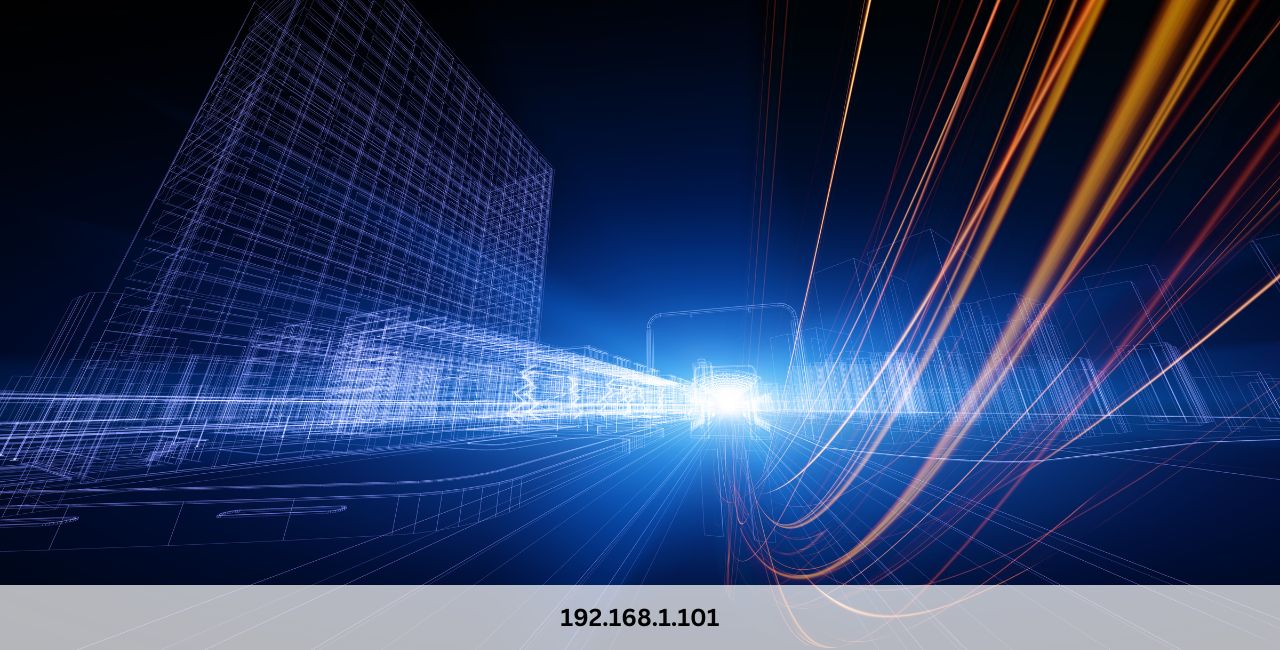
The 192.168.1.101 IP address is a pivotal element in network management, especially within home and small office environments. This address is often used as a gateway for router administration. This comprehensive guide will walk you through everything you need to know about accessing and managing your router using this IP address, including advanced configurations and troubleshooting techniques.
Understanding Private 192.168.1.101 IP Addresses
Private IP addresses like 192.168.1.101 fall within the 192.168.0.0 to 192.168.255.255 range. These addresses are utilized in internal networks and are not routable over the public internet. Their primary purpose is to manage and connect devices within a local network while keeping them secure from external threats.
Common Uses of 192.168.1.101
- Router Default Gateway: Many routers default to 192.168.1.101 as their internal gateway address.
- Network Configuration: Used for local network settings such as IP address assignment, DHCP configuration, and wireless network management.
Read Also: 10.10.10.10 IP Address Log In Router Admin
How to Access Your Router via 192.168.1.101
Initial Setup
To access your router’s admin interface using 192.168.1.101, follow these detailed steps:
Step 1: Ensure Network Connection: Ensure that your computer or device is connected to the router. This can be achieved through either a wired Ethernet connection or a wireless Wi-Fi connection.
Step 2: Open a Web Browser Launch a web browser such as Google Chrome, Mozilla Firefox, or Microsoft Edge.
Step 3: Enter the IP Address Type http://192.168.1.101 into the browser’s address bar and press Enter. This action will redirect you to the router’s login page.
Step 4: Log In to the Admin Interface: Enter your router’s admin credentials. These are typically:
- Username: admin
- Password: admin or password
If these credentials are incorrect, consult your router’s manual or the manufacturer’s website for the default login information.
Step 5: Update Default Credentials: Immediately after logging in, change the default username and password to enhance security. Navigate to the Admin Settings or User Management section to update these credentials.
Read Also: 192.168.0.102 IP address: How to Access and Secure Your Router
Configuring Your Router
Once logged in, you have access to various settings that can be configured to optimize your network. Below are key configurations you might need to manage:
Network Configuration
IP Address Management
- Change Router IP Address: Navigate to LAN Settings or Network Configuration to change the router’s IP address if required. This is useful if you need to avoid IP address conflicts or if you’re setting up multiple routers.
- DHCP Settings: Configure the Dynamic Host Configuration Protocol (DHCP) settings to manage how IP addresses are allocated to devices on your network. You can set a range of IP addresses that the router can assign to devices.
Wireless Network Settings
SSID and Security
- SSID Configuration: Access the Wireless Settings section to change the SSID (Service Set Identifier), which is the name of your Wi-Fi network. It is advisable to use a unique name that is not easily identifiable.
- Security Protocols: Set up WPA3 (Wi-Fi Protected Access 3) encryption for optimal security. If WPA3 is not available, WPA2 (Wi-Fi Protected Access 2) is the next best option. Ensure that you use a strong, unique password for your network.
Advanced Features
Firewall and Security
- Enable Router Firewall: Go to the Firewall Settings to enable the router’s built-in firewall. This feature helps protect your network from external attacks and unauthorized access.
- Update Router Firmware: Regularly check for firmware updates under System Tools or Firmware Upgrade. Keeping your firmware up-to-date ensures that your router has the latest security patches and performance improvements.
Additional Configurations
- Port Forwarding: For applications requiring external access (such as gaming or remote desktop applications), configure port forwarding settings under Advanced Settings or Port Forwarding.
- Quality of Service (QoS): Manage network bandwidth and prioritize traffic for specific applications or devices by setting up QoS under Traffic Management.
Troubleshooting Common Issues
Login Issues
Cannot Access 192.168.1.101
- Verify Connection: Ensure that your device is correctly connected to the router. Check physical connections or wireless settings.
- Correct IP Address: Confirm that 192.168.1.101 is the correct IP address for your router. You can check the router’s IP address from a device connected to the network by looking at network settings.
Admin Credentials
Forgotten Password
- Router Reset: If you have forgotten your admin credentials, you may need to perform a factory reset. Locate the reset button on the router, press and hold it for about 10-30 seconds, and then reconfigure the router using the default credentials.
Network Issues
Network Connectivity Problems
- Restart Router: Power cycle the router by unplugging it for about 10 seconds, then plugging it back in.
- Check Physical Connections: Ensure that all cables are securely connected and that there are no visible damages to the cables.
Securing Your Network
- Use Strong Passwords: Create strong, unique passwords for both your Wi-Fi network and the router’s admin interface. Avoid using common words or easily guessed combinations.
- Regular Monitoring: Regularly review the list of connected devices and monitor network activity for any suspicious behavior.
- Enable Guest Network: If you frequently have visitors, consider setting up a guest network with limited access to your main network resources.
Conclusion
Managing your router through the 192.168.1.101 IP address involves logging in to the admin interface and configuring various settings to optimize network performance and security. By following this guide, you can effectively manage your router settings, troubleshoot common issues, and enhance your network’s security.








